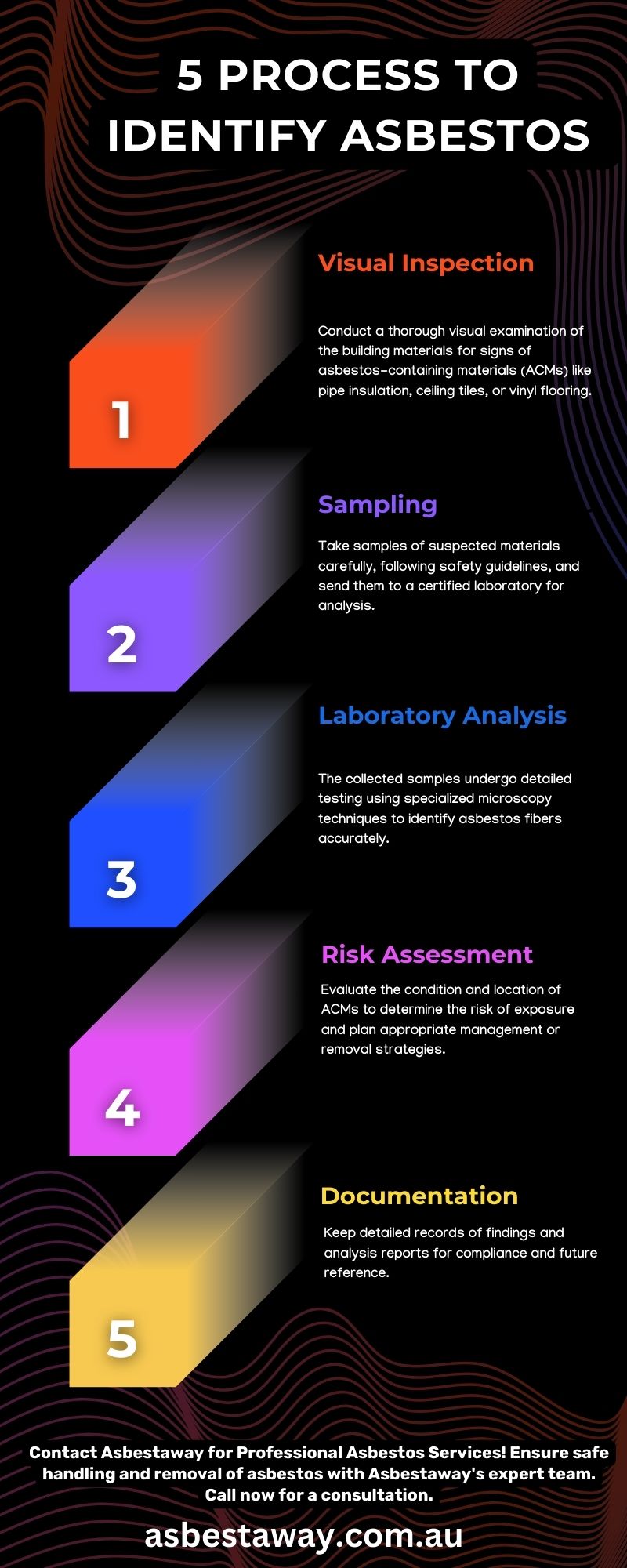Asbestos is a hazardous material commonly found in older buildings. Identifying asbestos-containing materials (ACMs) is crucial for ensuring safety during renovations or demolitions. Here’s how to identify asbestos in five essential steps:

Step 1: Visual Inspection
Begin by visually inspecting building materials. Look for potential ACMs such as insulation around pipes, textured ceiling tiles, or vinyl flooring. Note any suspect materials for further evaluation.
Step 2: Sampling
Carefully collect samples of suspected ACMs following safety protocols. Use appropriate personal protective equipment (PPE) and sampling tools to avoid fiber release. Place samples in airtight containers labeled with detailed information.
Step 3: Laboratory Analysis
Send the collected samples to a certified laboratory specializing in asbestos analysis. Trained technicians will use microscopy techniques to identify and quantify asbestos fibers present in the samples.
Step 4: Risk Assessment
Based on laboratory results, conduct a risk assessment. Evaluate the condition, location, and extent of ACMs to determine potential exposure risks. This assessment guides decisions on management or removal strategies.
Step 5: Documentation
Document all findings, including visual inspection results, laboratory reports, and risk assessments. Maintain detailed records for regulatory compliance and future reference during renovation or demolition projects.
Conclusion: Ensure Safe Handling of Asbestos
Identifying asbestos is critical for maintaining a safe environment. Proper identification and assessment help mitigate health risks associated with asbestos exposure. For professional asbestos services and safe removal, contact Asbestaway today!

